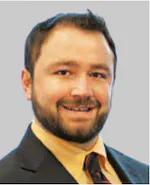Commentary
Article
Urology Times Journal
Qualified charitable distributions and avoiding taxes on RMDs
Author(s):
"At age 73, you must start taking distributions from the account in the form of required minimum distributions (RMDs), which are typically taxable. This means you must include the RMD in your income and pay income tax on the distributed amount," writes Jeff Witz, CFP.
Jeff Witz, CFP

The Internal Revenue Service (IRS) is patient but not generous. It allows you to grow a pretax retirement account such as a 401(k), 403(b), or traditional individual retirement account (IRA) tax deferred until age 73. At age 73, you must start taking distributions from the account in the form of required minimum distributions (RMDs), which are typically taxable. This means you must include the RMD in your income and pay income tax on the distributed amount. Not only may this mean a larger tax burden than in previous years, but it can also affect Social Security taxation and Medicare calculations and may even push you into a higher income tax bracket.
Fortunately, a law passed in 2015 provides an option for avoiding some of the negative tax impacts of RMDs. You have the option to make all or a portion of your RMD tax free by directing it to the charity of your choice. These are known as qualified charitable distributions (QCDs). This allows qualifying IRA owners to make IRA distributions of up to $105,000 to charitable organizations. The amount counts toward satisfying your RMD yet is excluded from your gross income as well as Social Security and Medicare calculations.
These distributions can be a convenient way to support charitable causes and get a tax break while meeting withdrawal requirements for IRAs. However, you must adhere to a number of criteria to capture the tax savings. You should be aware of the following:
• QCDs permit annual direct payments to qualified charities up to a total of $105,000 that can be excluded from taxable income but still count toward satisfying the RMD.
• Funds distributed to the IRA owner first, no matter how briefly, then contributed to charity do not meet the criteria for a QCD.
• Checks issued by the IRA custodian must be made payable to the charity but can be mailed to the IRA owner to provide an opportunity to photocopy the check to maintain complete records (recommended).
• Although RMDs may not begin until age 73, you can start making QCDs as early as age 70½ years. Many will choose to wait until they are forced to start taking RMDs, but the rules state that QCDs can begin when the individual turns 70½.
• The charitable entity must be a 501(c)(3) organization that qualifies for a charitable income tax deduction of an individual. Donor-advised funds, supporting organizations, or private nonoperating foundations do not qualify.
• The receiving charity must provide the IRA owner with the same contribution acknowledgment needed to claim a charitable income tax deduction, indicating that no goods or services were received in exchange for the contribution. Failure to produce this in the event of an IRS audit will disallow the QCD from being included in taxable income.
• QCDs can be made from any traditional IRA (including an annuity) but not from a simplified employee pension plan, simple IRA, or inherited IRA.
• The QCD will generally be included in the distribution amount the IRA custodian reports on Form 1099-R. It’s up to the IRA owner or their tax preparer to report how much of the distribution went to charity.
Other factors affecting the decision to make an IRA charitable distribution include whether your charitable contributions exceed your otherwise deductible limit, whether you itemize deductions, the potential loss of tax-deferred growth on the amount distributed from the IRA, and the effect on the size of future RMDs. All these considerations should be discussed with your tax adviser.
8750 W. Bryn Mawr Ave. Suite 325 Chicago, Illinois 60631
312-419-3733 - Toll Free 800-883-8555 - Fax 312-332-4908 - www.mediqus.com
Investment advisory services offered through MEDIQUS Asset Advisors, Inc. Securities offered through Ausdal Financial Partners, Inc.Member FINRA/SIPC ∙ 5187 Utica Ridge Rd ∙ Davenport, IA 52807 ∙ 563-326-2064 ∙ MEDIQUS Asset Advisors and Ausdal Financial Partners, Inc. are independently owned and operated.
Effective June 21, 2005, newly issued Internal Revenue Service regulations require that certain types of written advice include a disclaimer. To the extent the preceding message contains written advice relating to a Federal tax issue, the written advice is not intended or written to be used, and it cannot be used by the recipient or any other taxpayer, for the purposes of avoiding Federal tax penalties, and was not written to support the promotion or marketing of the transaction or matters discussed herein.
The information contained in this report is for informational purposes only. Any calculations have been made using techniques we consider reliable but are not guaranteed. Please contact your tax advisor to review this information and to consult with them regarding any questions you may have with respect to this communication.
MEDIQUS Asset Advisors, Inc. does not provide tax, legal or accounting advice. This material has been prepared for informational purposes only, and is not intended to provide, and should not be relied on for, tax, legal or accounting advice. You should consult your own tax, legal and accounting advisors before engaging in any transaction.































